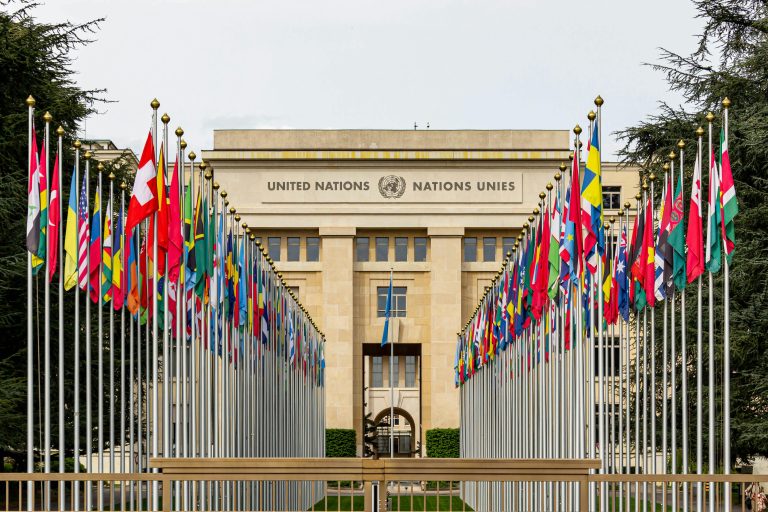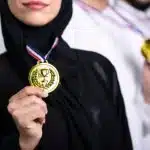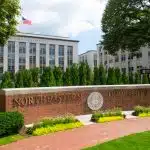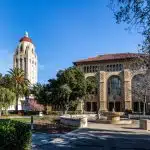There’s no such thing as being too young to engage with global issues—and Model United Nations helps you start right where you are. If taking on the role of a country’s delegate, speaking on real-world problems, and collaborating with like-minded peers sounds like something you’re into, Model UN is a strong place to start.
Looking to join your school’s team or still unsure if Model UN is right for you? Let’s cover everything you need to know—from what Model United Nations is to how you can get in—so you can confidently start building global skills that matter.
- What Is Model United Nations?
- Model United Nations Acceptance Rate
- Model United Nations Application Deadline
- Model United Nations Requirements
- How to Get into Model United Nations
- Why Join Model United Nations?
- Frequently Asked Questions
- Takeaways
What Is Model United Nations?
Think of Model United Nations (Model UN or MUN) as stepping into the shoes of a global delegate. From tackling climate change to responding to international conflict, Model UN builds your ability to speak, negotiate, and find solutions to the kinds of debates world leaders face today.
For most students, it starts at the local level, usually through a school club or team that attends nearby conferences. It’s a chance to explore global topics with fellow delegates before stepping into bigger, more competitive settings, such as:
- School-based MUNs. Hosted by individual schools or through your school’s Model UN club, these are ideal for learning the basics in a low-pressure environment.
- Traditional MUN conferences. Usually held at hotels or universities, these large-scale events bring together hundreds of students for structured, competitive debate.
- Regional and thematic MUNs. These focus on specific global issues or regions. Perfect if you want to explore topics like climate policy or regional diplomacy in more depth.
- United Nations Association of the USA (UNA-USA) conferences. U.S.-based and backed by the UN Foundation, these focus on youth leadership and real-world policy discussions.
- THIMUN-style conferences. Based on The Hague International Model United Nations (THIMUN) format, these use a consensus-based approach where you collaborate more than compete—alongside delegates from around the world.
- Online MUN conferences. These let you join from anywhere and are especially helpful if you’re new to Model UN and want built-in training.
To get a better sense of what each type looks like in action, here are upcoming events or conferences worth exploring:
|
MUN Type |
Upcoming Event Example | Venue |
Event Dates |
|
School-based MUN |
Santa Clara Valley Model United Nations Conference (SCVMUN) | Santa Teresa High School, San Jose, CA | January 30–31, 2026 |
| Traditional MUN conferences | Harvard Model United Nations Australia (HMUN Australia) | Cranbrook School, Sydney, Australia |
May 29 –June 1, 2025 |
|
Regional and thematic MUNs |
Global Classrooms International MUN (GCIMUN) | Millennium Hilton – UN One Plaza, New York City | April 25–27, 2025 |
| UNA-USA conferences | Spring Model UN Conference by UNA-NCA | U.S. Department of State, Washington, D.C. |
April 29, 2025 |
|
THIMUN-style conferences |
THIMUN Singapore | Hwa Chong Institution, Singapore | October 27–31, 2025 |
|
Online MUN conferences |
International MUN Online Conference (IMUN) | Online | Monthly sessions throughout 2025 |
The choices can feel overwhelming, especially when you’re just starting out. But once you understand how Model UN works and where you’re most confident to begin, you’ll get more out of the experience, one conference at a time.
Model United Nations Acceptance Rate
Joining your school’s Model United Nations club is usually as simple as showing up with interest and initiative. But as you move toward larger, more competitive events, admission isn’t always guaranteed.
While there are no set Model United Nations acceptance rates, acceptance varies widely depending on the type of conference, its size, and how selective the host organization tends to be:
|
MUN Type |
Estimated Acceptance Rate |
|
School-based MUN |
100% |
| Traditional MUN conferences |
30 – 50% |
|
Regional and thematic MUNs |
80 – 90% |
| UNA-USA conferences |
80 – 95% |
|
THIMUN-style conferences |
60 – 80% |
| Online MUN conferences |
95 – 100% |
While these numbers are just estimates, they follow common trends based on how each event typically runs:
- School-based MUNs are fully inclusive, giving every interested student a chance to participate and learn the basics.
- Traditional conferences like Harvard Model UN (HMUN) are more competitive due to their prestige, high application volume, and limited delegate slots.
- Regional and thematic MUNs like the National Model United Nations (NMUN) aim to engage local schools and communities, making them more accessible to new or returning delegates.
- UNA-USA conferences focus on education and engagement over selectivity, which is why most eligible school groups are accepted.
- THIMUN-style conferences are internationally recognized and draw global delegations but still emphasize access to international schools despite limited space.
- Online MUNs have the highest acceptance rates due to fewer limitations like cost and travel, with a focus on open participation.
Knowing how competitive each event is gives you a better sense of where to start—and how to plan your next steps, especially when sign-ups open.
Model United Nations Application Deadline
Joining Model United Nations at your school usually follows its own timeline. But attending larger events—especially high-profile or international ones—takes more prep. Conferences like HMUN or THIMUN often require early delegation planning and paperwork your club adviser may start months in advance.
So if you’re aiming to apply to one of these conferences over time, here’s what to expect in terms of deadlines:
|
MUN Type |
Application Deadline |
|
School-based MUN |
Varies by school; often closes a few weeks before the event |
| Traditional MUN conferences |
Spans several months; has priority and general deadlines |
|
Regional and thematic MUNs |
Close to conference date |
| UNA-USA conferences |
Varies; closes weeks before the event |
|
THIMUN-style conferences |
Varies; delegation forms are typically due by September or November; individual applications close earlier |
|
Online MUN conferences |
Closes two weeks to a month before each event |
Depending on the type of MUN, here’s how a few real conferences line up with those timelines:
- As a school-based MUN, the Northwood High School Model United Nations Conference (NHSMUNC IV) closes applications on April 5 for its April 26 event.
- As a traditional MUN, HMUN Australia accepts regular registrations until May 1, with late sign-ups accepted until May 22 for its May 29–June 1 session.
- As a thematic MUN, Peoria Academy Model United Nations (PAMUN) sets its deadline on April 14, just a few weeks ahead of its April 26 conference.
- As a UNA-USA conference, Spring Model UN closes registration on April 2, with final paper submissions due by April 21 for its April 29 event.
- As a THIMUN-style conference, THIMUN Singapore closes initial registration and individual applications by June 20, with delegation forms due September 15 for its October 27–31 session.
- As an online MUN, Stellar MUN closes applications on July 31, just a few weeks before its August 16–17 virtual conference.
With deadlines ranging from a few weeks to several months in advance, applying early gives you more time to prepare. It also ensures you and your Model UN requirements are ready when your club begins organizing its next big local or international conference trip.
Model United Nations Requirements
Model UN requirements can vary depending on the type of conference you’re joining, but most will ask for more than just interest. Some programs are open to anyone from a participating school, while others require formal applications, written materials, or advisor approval.
To manage your expectations, here’s what to expect when joining your first Model United Nations event or team.
Eligibility
Most students can join a Model United Nations, especially at the school level, but eligibility criteria may change depending on the type of conference you’re joining. From club participation to prestigious conference, here are the basics to keep in mind:
- Grade level. Most MUN conferences are open to students in grades 9–12. Local events are easiest to join, while selective ones like HMUN often focus on upperclassmen.
- Age range. Open to most high school students, MUNs typically accept students aged 14–18. Online events may be more flexible depending on your school level.
- School affiliation. Some conferences, like THIMUN, require you to join through a school team. Returning schools get priority, and new ones may need to apply in advance.
- Experience. Many events welcome beginners. Competitive conferences may prefer students with prior MUN experience, especially for leadership roles.
- Academic and behavior standards. Schools may ask you to meet certain grade or conduct requirements to join. External events rarely check, but being in good standing is ideal to stay eligible.
Not sure where to start? Ask your school’s MUN advisor or club lead. They’ll know which conferences your school participates in—and how to help you get involved.
Required documents
To join your school’s Model UN club, you’ll usually just need a membership form and a parent or guardian consent slip. But once you’re preparing for a conference, expect the paperwork to build.
Model UN document requirements depend on the club or conference you’re joining. The farther you go from your school, the more paperwork you’ll likely need. Some forms are handled by your advisor, but others you’ll need to submit or work on:
- Advisor or club sign-off. Can be a signature, digital approval, or formal letter. This confirms you’re joining Model United Nations through your school’s official club or team.
- Conference application form. Typically submitted through an online form by you, your advisor, or team leader, depending on the event’s process.
- Parent permission form. Required for off-campus or overnight conferences hosted outside your school.
- Position paper. A written summary of your assigned country’s stance on the committee’s topics. This is required by most formal MUNs.
- Delegate profile or personal statement. A short written form (sometimes optional) to introduce your interests or MUN background.
- Delegation forms. Usually completed by you or your club advisor, this form is used to register you or your team in large conferences.
- Liability waiver. A key form for out-of-school events. Signed by you and a parent or guardian to confirm the rules and safety protocols of the conference.
Ultimately, your school usually handles most of the paperwork, but you’ll want to be ready when it’s your turn to complete a form or turn something in on time.
Program costs
Joining your school’s Model United Nations club is usually free, but conference costs can vary, especially for travel-based events. Depending on the program, you might spend as little as $25 or as much as $500 or more for high-profile international conferences.
When deciding which events to join, it helps to look at what affects the total cost:
- Location. School-based or online MUNs are usually the most affordable. Travel-based conferences—like HMUN or THIMUN—often include higher fees and travel costs.
- Conference type. Regional or UNA-USA events are often budget-friendly, while international programs or selective traditional MUNs come with higher registration fees.
- Travel and lodging. Flights, hotels, and meals can quickly raise the cost for out-of-state or overseas events.
- Delegate size and setup. Some schools send small teams, while others register full delegations—meaning you and your team might split or cover costs differently.
- School or sponsor support. Depending on your school, some costs may come out of pocket or be covered through fundraising.
Still, don’t let costs discourage you from joining. Many students attend Model UN with help from schools, advisors, or local organizations, especially when they show real interest in the program and how Model UN works.
How to Get into Model United Nations
Now that you know what Model United Nations is and what you’ll need to participate, the next step is figuring out how to get in. Whether you’re joining through your school or aiming for a larger conference later on, understanding the process can help you get ahead.
To help you set clear goals and manage expectations, here’s everything you should know to join your first Model UN:
1. Join or start your school’s MUN club.
Most students get into Model UN by joining an existing club at their school. If you’re interested, the best place to start is by asking a counselor, teacher, or club leader how to sign up. Some schools require a short form or parental permission; others simply let you attend meetings.
If your school doesn’t have a Model UN club, talk to a teacher or advisor about how to create one.
2. Train through simulations, debate, and country research.
Once you’ve joined your school’s Model United Nations club, you’ll need to start training for your first conference. This usually includes learning the rules of procedure, practicing public speaking, and understanding how to represent your assigned country.
Clubs usually facilitate this by:
- Simulating committee sessions through mock debates so you can practice formal speech, test ideas, and get used to timed discussions.
- Assigning you research on real-world issues like climate change and human rights to help you see them from a country’s point of view.
- Helping you draft position papers that reflect your assigned country’s stance and policies.
- Building core skills like diplomacy, negotiation, teamwork, and public speaking through weekly practice and feedback.
Ultimately, these prepare you for what to expect when it’s time to join your first real conference.
3. Join local or school-affiliated MUNs.
Your first Model United Nations conference will likely be local or school-affiliated, planned by your club or a fellow school-based MUN. These events are beginner-friendly, often one-day sessions that help you practice what you’ve learned in a real setting.
They’re also a great way to understand how Model UN works beyond your club. You’ll follow a full agenda, work with students from other schools, and get a sense of how committees run from start to finish. They’re a solid foundation for larger or more selective conferences.
4. Apply to larger regional or international events.
Once you’ve gained some experience through a few local or school-based MUNs, you may want to apply to larger conferences for next-level Model UN experience. These events are often multi-day, more competitive, and may ask for prior participation or team nominations.
Expect more formal applications and selective acceptance, especially for conferences like HMUN or THIMUN. Some may require your advisor to register your school’s delegation early, while others ask for paperwork like delegate profiles and position papers.
If you’re looking to take the next step, these conferences offer deeper debate, cultural exchange, and challenge—just be sure to plan and train ahead to meet the requirements.
5. Prepare and submit required documents.
Once you’ve been approved or registered for a Model United Nations conference, you’ll likely need to submit a few documents to confirm your participation. Requirements vary by event, but your advisor or team lead will usually guide you through what’s needed.
To stay on track, keep an eye on submission dates and turn everything in early. Many conferences offer priority and late registration windows, so submitting on time keeps your application moving and gives your team more time to prep.
Why Join Model United Nations?
If you’re looking to strengthen your college applications or build real-world skills, Model United Nations can open plenty of doors. From public speaking to global awareness, it offers hands-on experience that colleges and future employers value.
Still on the fence about joining? Let’s take a closer look at the benefits of Model UN.
1. Boosts public speaking skills and confidence
Model United Nations helps you build confidence by giving you the chance to speak in front of others—often with little time to prepare. Whether you’re delivering a speech or responding to a new idea during debate or group sessions, you’ll get better at thinking clearly and making your point out loud.
2. Sharpens research and critical thinking
Beyond preparing you for debate, Model United Nations teaches you to research complex issues and think critically about real-world solutions from different viewpoints. Ahead of each conference, expect to build a research-backed stance on specific topics, helping you approach problems more objectively and respond with purpose.
3. Develops leadership and team collaboration
Model United Nations puts you in team settings where you’ll need to speak up, listen to others, and help your group reach a decision. From writing a resolution to leading a small group, you’ll learn how to organize ideas, stay on task, and work together under pressure—a key benefit of Model UN.
4. Strengthens college applications and interviews
Model United Nations stands out on college applications because it shows you can think critically, lead in teams, and speak with confidence. It’s the kind of experience that gives you specific stories to pull from in your essays or interviews—a solid reason why joining Model UN matters.
5. Expands global awareness and cultural perspective
Giving you a front-row seat to how global issues are discussed, debated, and solved, Model United Nations is a great way to learn about the world. By stepping into another country’s role, you’ll see how culture, history, and policy shape decisions—and why different perspectives matter in global discussions.
Frequently Asked Questions
1. What is the purpose of Model United Nations?
The purpose of Model United Nations is to help students explore global issues through debate, negotiation, and diplomacy. By simulating real UN committees, Model UN teaches you how international decisions are made and why understanding world affairs matters. It’s a hands-on way to learn about policy, leadership, and collaboration.
2. Who can join Model United Nations?
Model UN is typically open to most middle and high school students, with some conferences also welcoming college participants. If your school has a club, you’ll usually just need to sign up and commit to taking part, even without experience. From there, with training, you can start joining local, regional, or even international conferences.
3. Do I need prior experience to join Model UN?
You don’t need experience to join Model UN at your school. Most clubs welcome beginners and provide training before your first conference. But for larger events like THIMUN or HMUN, some background or participation in earlier conferences may be expected. Starting early gives you time to build that experience and grow into more competitive conferences.
4. What skills can I develop through Model UN?
Model United Nations helps you build real-world skills like public speaking, research, critical thinking, and teamwork. By preparing for conferences and working with other delegates, you’ll learn how to communicate clearly, solve problems, and lead discussions—key reasons why joining Model UN is such a valuable experience.
5. How do I start a Model UN club at my school?
To start a Model United Nations club, talk to a teacher or advisor who can help support and register the group. From there, once your team is official, recruit interested classmates, set regular meetings, and look into nearby conferences to attend. It’s one of the easiest ways to get into Model UN if your school doesn’t already have a team.
Takeaways
If you’re planning to join your first Model UN, here’s everything you should keep in mind before signing up or sending in an application:
- Model United Nations comes in many forms, from school-based clubs to international conferences. Depending on size, demand, and selectivity, acceptance for each one also varies.
- Deadlines and requirements vary by event. Most conferences ask for basic forms, advisor approval, and a position paper, especially for larger or more competitive ones.
- Getting into Model UN usually starts with your school’s club. From there, you can gain experience at local events before applying to more competitive conferences.
- Model UN is more than debate. It builds confidence, strengthens key skills, and gives you solid experience to use in your college applications.
- If you’re unsure where to begin, a college admissions expert can help you evaluate your extracurriculars and see if Model UN is the right move for your application.

Eric Eng
About the author
Eric Eng, the Founder and CEO of AdmissionSight, graduated with a BA from Princeton University and has one of the highest track records in the industry of placing students into Ivy League schools and top 10 universities. He has been featured on the US News & World Report for his insights on college admissions.





















